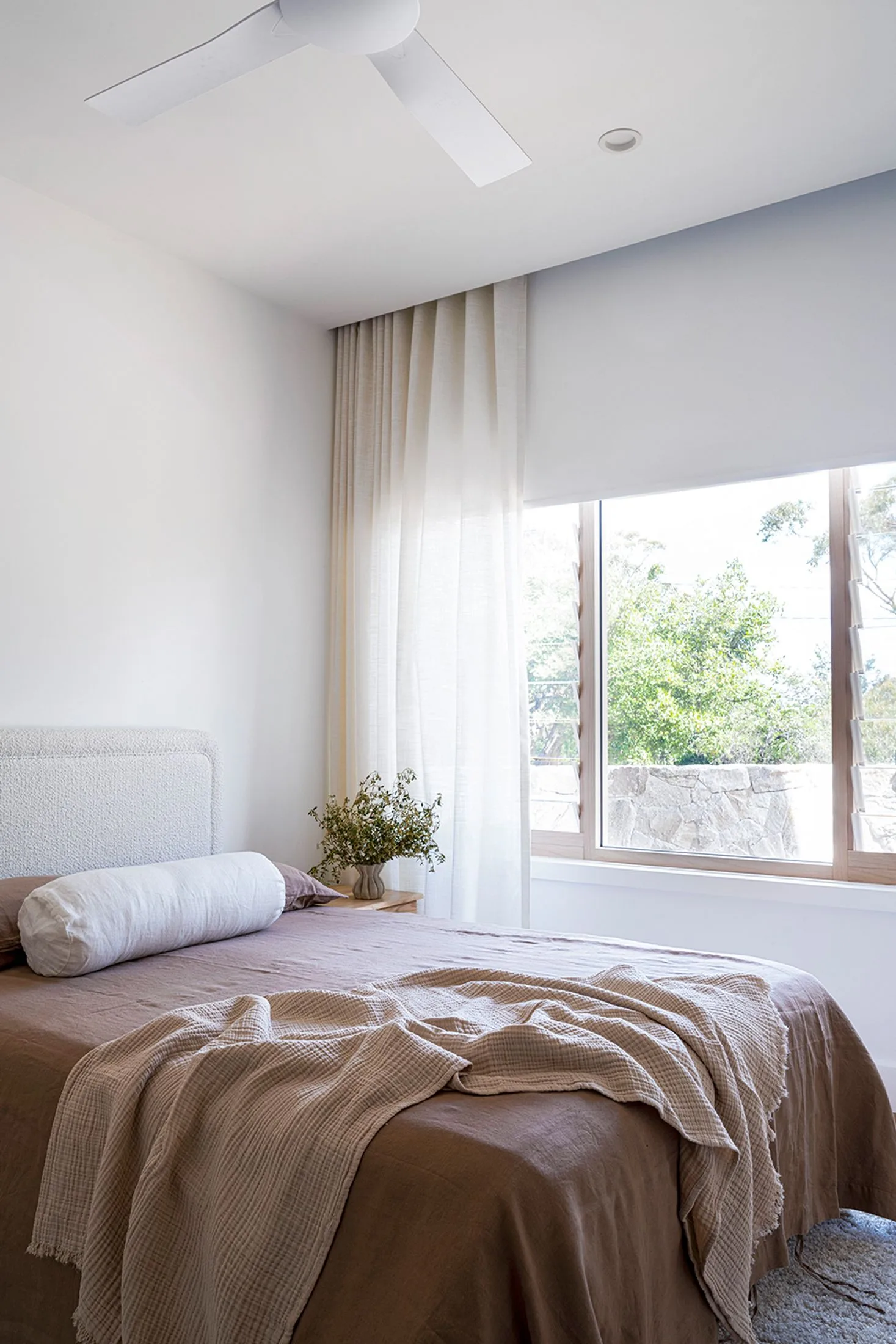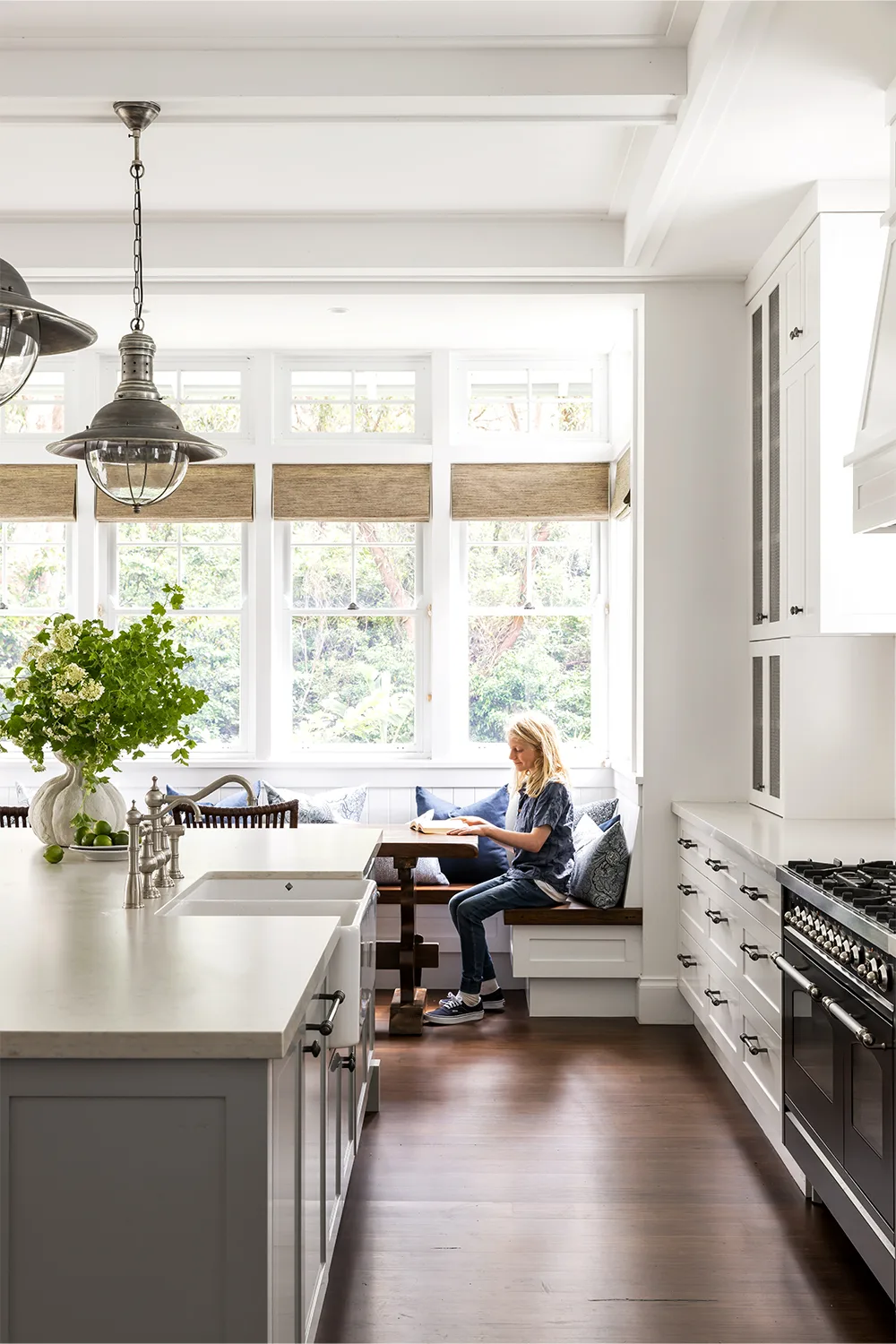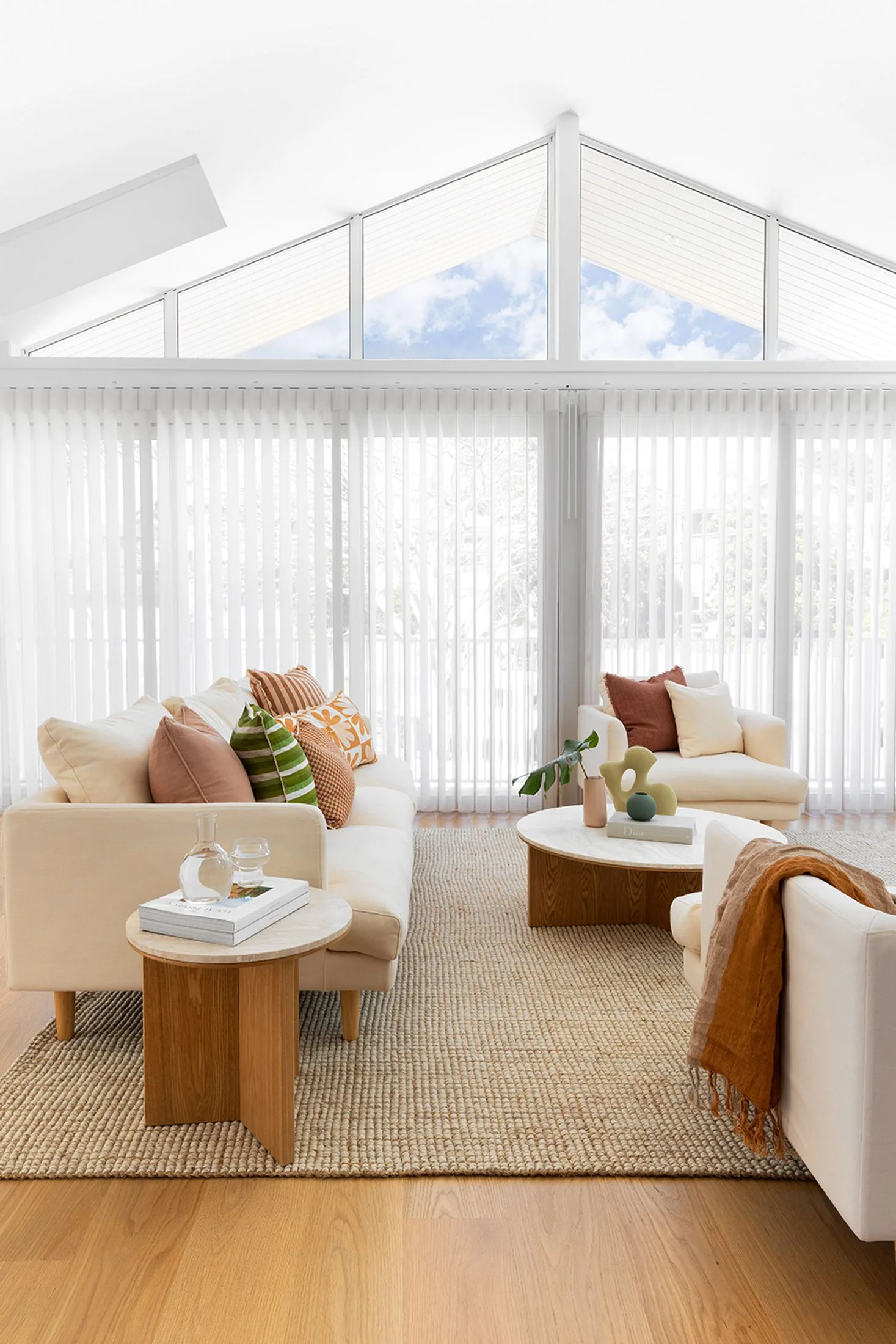Ahhh, big windows and a home flooded with natural light – it sounds like such a selling point until you realise the sun’s glare is your new alarm clock and washing dishes at the kitchen sink has turned into something of a stare-off with your next door neighbour. The time has come to cover your windows, and blinds are the obvious solution. But of all the different types of window blinds on the market—from classic venetian blinds to the smart motorised roller blinds— which one is best?
Vera Meharg, group marketing executive at Luxaflex Window Fashions – who have been sharing their products and expertise for 70 years – says you’re right not to assume that all blinds do the same thing and recommends that anyone choosing blinds take these eight things into account: the primary purpose you want the blind to serve, style, light control, energy efficiency, ease of maintenance, privacy, quality and who will be using the space.
Her personal favourite? “Blinds that have more than one function,” she says, “such as good light control, privacy and insulation. I also like blinds where you can control the amount of light coming into your home.”
Visually speaking, some blinds can become a gorgeous feature in a maximalist home (e.g. Roman blinds) while others are better at blending right into the background to reduce visual clutter (e.g. roller blinds).
Here Vera breaks down five of the most common types of blinds so you can decide which type is right for your home.

1. Roller blinds
Roller blind pros
Roller blinds are the best all-rounder. “Roller blinds provide smooth and sleek operation with many fabric choices and occupy less space,” says Vera. They can create privacy, be used in combination with curtains, can be either custom-made or purchased off-the-shelf and, above all, are relatively cheap. Some roller blinds, such as Tuiss Blinds Online’s Easi-Fit Blinds can even be installed without the need for a drill – which is a win for renters. To really control light and privacy, double blinds are a must.
These days, there are also motorised versions of roller blinds. These roller blinds are easily integrated into your smart home set up and some versions, like Whispertech Motorised Roller Blinds, even offer voice-activated control.
Motorised Roller Blinds, even offer voice-activated control.
The trick with roller blinds is to select them in a colour that matches the interior wall colour, so they disappear into the room, rather than becoming a feature in their own right (which is not what you want). Bunnings Pillar range of blinds come in four popular Dulux shades: Natural White, Hog Bristle Quarter, Tranquil Retreat and Woodland Grey so you can easily colour match it to suit your home.
Roller blind cons
Roller blinds aren’t without their faults, thought. One downside you may encounter with a roller blind is that the bottom rail bangs in the breeze when the window is open but the blind is closed. To stop this from happening, ensure the weight discs are correctly installed, use felt stickers to dampen the sound of the rail hitting the window frame or even install magnets (window magnets are available on Amazon) on both the window frame and the rail to inhibit movement.
Vera says that another downside is the amount of light they can let into a room, “they’re not the best option when it comes to blocking out light, they can leave large light gaps.”

2. Roman blinds
Roman blind pros
Roman blinds are a popular choice for window furnishings right now, because they offer the best of both a curtain and a blind. In some areas of the home, curtains just aren’t practical or won’t look quite right. A Roman blind creates the same kind of softness and opulence without all of the cumbersome drapery. Plus, sewing your own Roman blind is a relatively easy DIY project.
Roman blinds come in a wide variety of fabrics and weights, which means you can choose lighter, sheer fabrics where privacy is not an issue, or heavier textiles for privacy, or if you need to protect furnishings from the harsh afternoon sun.
Roman blinds have been spotted in homes designed by the likes of Anna Spiro, Amy Spargo of Maine House Interiors and Maggie Fulton of Jam Interiors.
Roman blind cons
Roman blinds can lack versatility, especially when it comes to privacy and light control. “They can only be lifted up and down, which means they don’t have the versatility of blinds where you can tilt the vanes to give you more flexibility,” says Vera. “Roman blinds that are operated manually with a cord may not be the best option for child and pet safety,” she adds.

3. Honeycomb blinds
Honeycomb blind pros
Tucked neatly into your window frames, honeycomb blinds – also known as cellular blinds – are one of the best ways to get a streamlined look with all the features of thermal insulation, light and noise reduction and a plethora of contemporary colour choices, without all the extraneous fixtures and fittings. The cellular structure traps air inside the honeycomb pocket to form an energy-efficient barrier to prevent penetrating heat or cool air from outside. The streamlined look and superior fit inside your window frame without messy cords make it safe for children, leaving your walls and floors clear for furniture and easy cleaning.
Honeycomb blind cons
While there are plenty of fabric options to choose from with honeycomb blinds, fabrics tend to be plain so not the place to make a statement with your window coverings. Regular dusting and a light vacuum of all types of blinds are recommended, but the concertina design on honeycomb blinds can make a deep clean difficult. Spot cleaning can be done with a mild detergent.

4. Venetian blinds
Venetian blind pros
Venetian blinds are often overlooked for roller blinds or Roman shades, but Architectural Digest writes that at one point in time, they were a hallmark of American high society. Despite this, Venetian blinds (especially timber ones) are still a practical and stylish window treatment.
Venetian blinds are easy to clean, and give you complete control over how much light enters your home without compromising on privacy. If you select Venetian blinds in the same colour as the window frame, you can even make the blind ‘disappear’ by pulling it all the way open to let sunlight come flooding in. “Depending on the material, they can also be more durable,” says Vera.
Another reason to love Venetian blinds is the aesthetically-pleasing shadows they cast across a room.
Venetian blind cons
Some downsides to Venetian blinds to consider include their lack of insulating properties and their tendency to accumulate dust. “The slatted design may allow light to pass through and are usually operated with a cord which may not be intuitive for everyone,” says Vera.
5. Vertical blinds
Vertical blinds were invented in the 50s, enjoyed a heyday in the 80s and then quickly went out of style. Despite being a complete eyesore – yes I said it – they continue to be installed in ‘renter grade’ homes because although they make every space feel like a dull and dated office, they do serve the practical purpose of allowing you to create privacy and block out glare.
If budget is the main reason you’re considering installing vertical blinds, try one of these other affordable (and more stylish) options instead: honeycomb or cellular blinds, curtains or Tuiss Blinds Online Privacy Sheers.
Vertical blind pros
Vera says that one area where vertical blind excels over other options is “expansive doors or windows.” The slide-to-open motion matches the movement of the door, which makes entering and exiting the home much easier than if the opening were to be covered by, say, a roller blind running the entire width of the door. But, be sure to consider the stacking options.
Vertical blind cons
Practical downsides to vertical blinds include their tendency to get tangled in gusts of wind and considerable light leakage, even when the vanes are closed.

6. Panel blinds
Panel blind pros
Large windows and sheer curtains are a match made in heaven, but at the end of the day, not everyone loves curtains. A great, minimalist option that does away with petty pleats, pelmets and tie-backs is the panel blind.
Panel blinds emulate the softness of a sheer, but can be stacked to maintain full access to sliding or large stacker doors without having to opt for harsh vertical blinds. They’re designed for minimalist homes (panel blinds in bright colours or patterned fabrics are hard to find) and would look wonderful in a Japandi-style interior.
Panel blind cons
Panel blinds can, however, obscure a beautiful view, warns Vera. “The width of the panel may cover an entire pane of glass, which may not be the best for those who want some view through. Also, the tracks that the blinds run along will need to be cleaned regularly to ensure smooth operation,” she says.
Selecting blinds for your home can be a daunting task. Here are Vera’s tips for selecting the best blinds for your home:
How to choose the right blinds for your home
- Always talk about your window covering requirements with an expert, who can help you identify the best options and flag any concerns
- If you’re building or renovating, think about window coverings early. “By discussing your needs early, you can ensure power is placed where it is needed, if you’re looking at motorised or automated window covering solutions. There’s also the option to recess window coverings or install them behind a bulkhead for a contemporary look.”
- Window coverings are an investment, so you want to make sure you’re selecting products that are made from higher quality materials to ensure a longer lifespan
- Don’t forget to consider safety, especially if you have young children. “Look at cordless operation options of motorised solutions.”
This article originally appeared on Home Beautiful and is republished here with permission.







